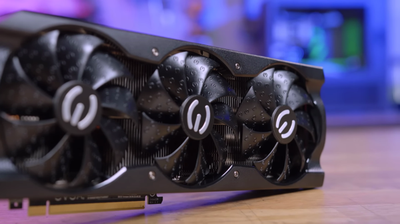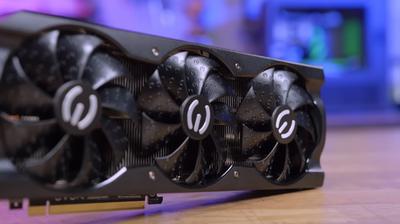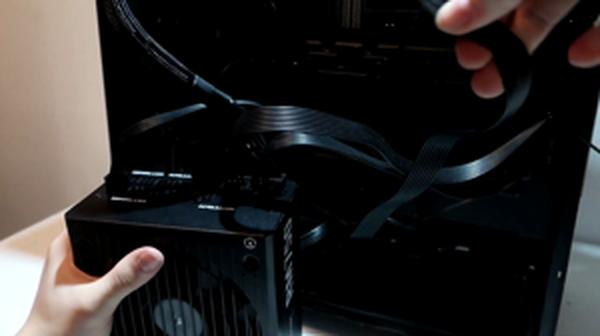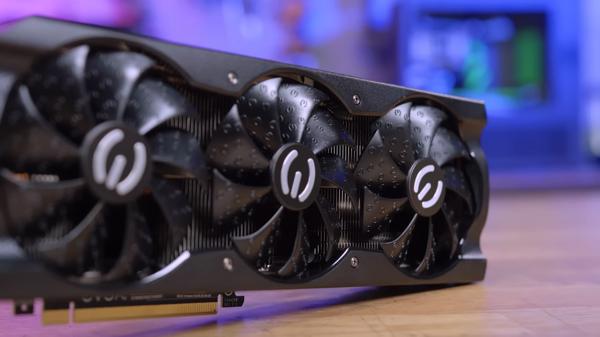
New GPU: Using the EVGA RTX 3070 Ti (XC3 Ultra, 8GB GDDR6X) (2024)
My thoughts on using the EVGA RTX 3070 Ti with its performance cooling longevity and gaming prowess
Introduction
I recently upgraded my gaming rig with the EVGA RTX 3070 Ti XC3 Ultra. The improvement in performance is quite noticeable. Out of the box, this card offers advanced features and a significant upgrade in graphics quality. I tested it in various games - more on this below.
Some photos (click to enlarge)




Specs of the EVGA RTX 3070 Ti XC3 Ultra
- Release Year
- Brand
- Graphics Coprocessor
- Graphics Ram Size
- Gpu Clock Speed
- Gpus-video-output-interface
Prices
Initial Impressions & Performance

As someone who's experienced a wide range of graphics cards over the years, my transition to the EVGA RTX 3070 Ti XC3 Ultra has been mostly impressive. My first thoughts revolved around the performance aspects of the card, which didn't disappoint. With a Real Boost Clock of 1815 MHz and a hefty 8GB of GDDR6X memory, the card delivers ultra-smooth gameplay, even in graphically intensive titles like Half-Life Alyx.
Playing games with Ray Tracing turned on is like witnessing a generational leap in graphical fidelity. The hyper-realistic lighting, reflections, and shadows truly immerse you in the game's environment. I must say, the triple fans and iCX3 cooling technology are a boon, maintaining a balance between cooling and acoustic noise. Even with its power, it fits snugly into my setup as a dual-slot card, making it aesthetically pleasing with its all-metal backplate and adjustable ARGB lighting.
Here's a quick breakdown of my initial findings:
Pros:
Powerful performance with Ray Tracing.
Efficient iCX3 cooling mechanism.
Sleek design with ARGB and a metal backplate.
Abundant support, thanks to EVGA's technical assistance and 3-year warranty.
Cons:
Fan longevity seems to be a concern.
Operating temperatures can get high; consider your PC's airflow.
8-pin connectors not included, which might delay setup.
On the downside, there have been issues with the fan's durability; within a year, a fan began to fail. This is something to watch out for if you're looking at long-term use. Additionally, it's worth noting that without the 8-pin connector bundled, there might be a slight delay to get everything up and running if you don't have spare ones lying around.
As for the graphics coprocessor and brand, I've become an advocate for EVGA over the years due to its customer-first approach and dependable warranty. It brings a certain peace of mind. The GPU clock speed ensures your gaming is not hamstrung by performance issues, and with multiple video output interfaces such as DisplayPort and HDMI, you have options for connecting various displays.
While some might nitpick about the price point of Nvidia cards, snagging this GPU on sale was a victory. I tested it extensively in my 1080p 240hz gaming setup, teamed up with an i7-8700k CPU, and it handled everything flawlessly; a testament to its balance of price-to-performance ratio.
In essence, the EVGA RTX 3070 Ti XC3 Ultra has been a robust addition to my gaming rig. It has elevated my experiences in gaming worlds with satisfactory 4K performance and Real-Time Ray Tracing. However, it's not without its flaws, particularly concerning fan longevity. I'm hoping that with proper case ventilation and occasional dusting, this GPU will continue to power my gaming sessions for years to come.
Thermal Management Observations

In assessing the thermal management of the EVGA RTX 3070 Ti XC3 Ultra, it's notable that the built-in cooling system is a standout feature that directly impacts overall performance and user satisfaction. The triple fans and iCX3 Cooling contribute to maintaining lower operating temperatures, even when the GPU is under significant load. This design ensures that the card performs optimally, keeping the acoustic noise to a minimum, which is a major plus for users like me who prioritize a quiet computing environment.
However, the thermal performance isn't without its drawbacks. While EVGA has successfully integrated cooling technologies that allow the RTX 3070 Ti to run cool during standard operations, I've observed that during prolonged, intense gaming sessions or heavy workloads, the temperatures can climb. This can lead to challenges in overclocking, where maintaining a stable temperature becomes crucial for sustained performance.
Here's a breakdown of the thermal management observations:
Pros:
Quiet operation under normal conditions due to effective triple fans and iCX3 cooling technology.
A well-designed all-metal backplate contributes to the GPU's structural integrity and aids in heat dissipation.
The card’s performance stays consistent during regular gaming sessions, showing the cooling system does its job well.
Cons:
Higher temperatures observed when pushing the card to its limits, like during extended gaming or overclocking scenarios.
The necessity for a good heat dissipation setup becomes apparent when using processors of the 10th generation and above.
Potential longevity concerns for the cooling fans, as one of them began to show signs of wear after less than a year of use.
For me, the performance of the EVGA RTX 3070 Ti is impressive, especially considering the ultra settings on games like Half Life Alyx at 90Hz. The 8 GB GDDR6X RAM paired with a real boost clock of 1815 MHz has been a game-changer coming from previous GPU models.
I like the fact that the card is a dual-slot, making it an easier fit in many PC cases. Additionally, the adjustable ARGB on the backplate is a nice touch, allowing for a degree of personalization in my build, effectively balancing aesthetics and function.
Nevertheless, the concern about the durability of the fans is an issue I cannot ignore, considering the replacement cost and effort to find compatible parts in case of a failure. Despite this, the 3-year warranty and the assurance of EVGA's support mitigates some worries related to potential defects or issues.
In summary, my experience with the thermal management of this card has primarily been positive, but I would advise potential buyers to account for the possibility of higher temperatures during extreme usage and to plan their cooling solutions accordingly. Sufficient airflow in the case and considering an aftermarket GPU support bracket could help prevent any sag and prolong the lifespan of the card, ensuring users get the most out of their investment.
Longevity and Build Quality

In considering the EVGA RTX 3070 Ti XC3 Ultra, I'm particularly attentive to its longevity and build quality. My experiences with GPUs tell me that a blend of robust materials and thoughtful engineering fundamentally influences a product's durability. With this card, the all-metal backplate and the iCX3 Cooling system are indicative of EVGA's commitment to quality. However, practical long-term usage provides deeper insight.
Here's a rundown of my observations:
Triple Fan Design and iCX3 Cooling: This configuration leads to efficient heat dissipation, which is paramount for the longevity of any high-performance GPU.
Metal Backplate: Adds structural integrity and aids in cooling, but also increases the overall weight, which can lead to potential GPU sag without proper support.
ARGB LED: A nice aesthetic touch, though non-essential from a performance standpoint.
Build Components: The use of non-ball bearing fans could be a concern for some, as ball bearings typically have a longer lifespan.
Despite these features, it appears replacement fans are costly and scarce. This particular card has fans without ball bearings which suggests a potentially shorter lifespan. While the card initially operates exceptionally, within a year, I've noticed one fan beginning to fail. It's disappointing; when you invest in high-end components, you expect each part—down to the fans—to match the same quality.
Turning to the topic of heating, although powerful, the card demands an environment with good airflow to keep temperatures in check. Overclocking with a less than ideal cooling setup can push the card's thermal limits, so it's imperative to benchmark and test thermals thoroughly before any performance tweaks.
The addition of a 3 Year Warranty is reassuring, but in my opinion, the cooling fans should have also adhered to high longevity standards. Support brackets are recommended to prevent GPU sag over time, considering the weight of the metal backplate and cooling apparatus.
EVGA's technical support is a high point, known for its responsiveness and helpfulness. It's this level of customer service that often tips the scale in favor of a purchase—especially in scenarios where you might face hardware issues down the line.
To sum it up, the EVGA RTX 3070 Ti XC3 Ultra presents an impressive build quality with:
A solid cooling system that upholds performance under load.
Sufficient warranty that provides a safety net for consumers.
Good customer service to address any potential issues.
However, the decision to use fans without ball bearings is a letdown for an otherwise excellent GPU, and finding replacements is more challenging than it should be. In addressing longevity, every component's durability is crucial in delivering a satisfying long-term experience.
Comparative Gaming Experience

Transitioning from my previous graphics card to the EVGA GeForce RTX 3070 Ti XC3 ULTRA GAMING has been transformative for my gaming sessions, offering significant improvements across various areas. The upgrade is evident as I bolster my setup, looking to keep pace with the latest gaming titles and their increasing demand for graphical power.
Right off the bat, one can't help but notice the Real Boost Clock of 1815 MHz and the capacious 8GB GDDR6X memory. These specifications mean my games load faster, textures are sharper, and the overall gameplay feels more responsive. The promise of real-time ray tracing has also lived up to its hype, providing me with a level of realism and immersion that my previous card simply couldn't match.
Here's a quick rundown of what I've appreciated about this card:
Real Boost Clock of 1815 MHz: Provides smoother frame rates and detailed visuals.
8GB GDDR6X Memory: Ample memory for high-resolution gaming and multitasking.
Real-Time Ray Tracing: Unmatched lighting effects that create a lifelike gaming experience.
iCX3 Cooling Technology: Keeps the card cool, even under heavy load, without ramping up noise levels.
However, it's not without its drawbacks. While the triple fans and iCX3 cooling are impressive, managing the heat in a compact setup can be challenging. Overclocking has its boundaries; ensuring efficient heat dispersion is crucial to maintain performance without thermal throttling.
I've also experienced firsthand the frustration of hardware issues, as one of the fans started acting up less than a year into usage. While not catastrophic, it's a dent in what is an otherwise stellar experience, especially considering the card's heftier price tag.
That said, the leap from a GTX 1080 to the RTX 3070 Ti was palpable in my everyday gaming. Running titles on my 1080p setup might not push the card to its absolute limits, but the headroom for future upgrades, like moving to a 2k or 4k monitor, is reassuring. Moreover, the 3 Year Warranty offers some relief from the fear of early hardware issues.
It's a mix of emotions knowing EVGA is exiting the graphics card market. Having been able to get this model before they disappear adds a layer of sentiment to my setup. All in all, my experiences reflect a product that offers impressive performance boosts while acknowledging that no piece of technology is without its potential for issues. It's been an anchor of reliability for my system, and while there are occasional waves to weather with any high-end component, I can confidently say that this upgrade was a wise choice to future-proof my gaming rig.
Comments (1)
Share
rizzy drake